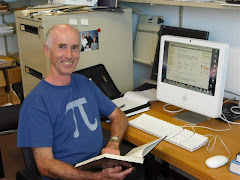
As a result of the high levels of stress, and the action of the hormones produced, critically ill patients often experience hyperglycemia (high blood sugar) and increased insulin resistance. This can lead to further complications, such as organ failure and severe infection. So it is important to control the glucose levels by insulin infusion and a suitable food intake regime.
Various models for glucose-insulin kinetics have been investigated over the years. A model sufficient for this situation can be given by three first order differential equations. G(t) is the concentration of glucose above equilibrium (GE) levels, I(t) is the concentration of insulin (above basal levels) in the blood plasma, and Q(t) is the concentration of interstitial insulin, in the fluid that surrounds the cells - it is this that enables the cells to take up glucose.

The insulin infusion rate u(t) is known.
Notice that the equation for the rate of change of glucose concentration has three terms, the first two giving the decrease in glucose due to insulin (basal plasma insulin and interstitial) and the third giving the increase due to feeding, P(t). The key parameters in the process are the insulin sensitivity, SI, and the glucose fractional clearance, pG, which are patient specific and vary with time. By estimating other less important parameters using typical population values, reformulating the model in terms of integrals and then using numerical integration from the measured data (regular blood glucose levels for patients are taken), a set of equations can be solved for the key parameters over different time periods.
Having worked out a method that is computationally efficient, the model can now be tested with virtual patients, enabling a large number of simulations to be carried out, and refinement of the model. Chris Hann explains that there are more complex models of the glucose-insulin system that could be used, but nothing would be gained from using them in this application, where we are looking at glucose levels on an hourly (or greater) time scale. A detailed and physiologically correct insulin model is only useful for much smaller scales. "We always look to create the simplest possible model for the given application."
Extensive testing showed close agreement between the model predictions and clinical data. The final outcome of the work was the development of the 'Insulin Wheel' and 'Feed Wheel' which give protocols for the administering of insulin and food on the basis of the measured blood glucose levels and the change from the previous hour. Use of this has lead to a significant decline in the mortality rate in the Intensive Care Unit.
Work is now underway on patient-specific modelling of the cardiovascular system in critical care.
My thanks to Dr Chris Hann from Canterbury University. Meeting mathematicians who are enthusiastic about the work they are doing is one of the great pleasures of my fellowship year.
.JPG)



.jpg)


.jpg)